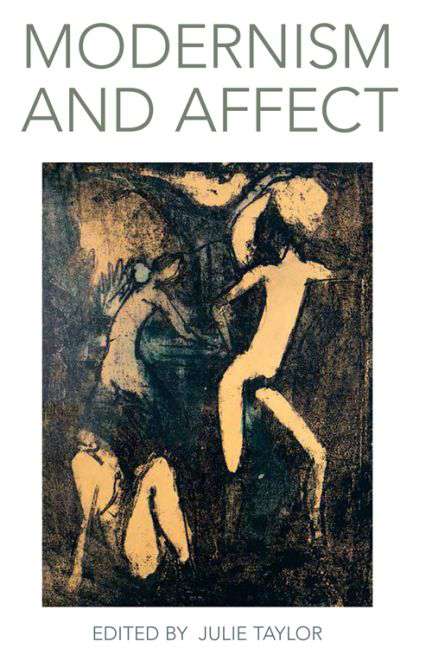Book contents
- Frontmatter
- Contents
- List of Illustrations
- Acknowledgements
- Notes on Contributors
- Introduction: Modernism and Affect
- 1 Mind, Body and Embarrassment in Henry James's The Awkward Age
- 2 The Trauma of Form: Death Drive as Affect in À la recherche du temps perdu
- 3 Logic of the Heart: Affective Ethical Valuing in T. E. Hulme and Max Scheler
- 4 The Line that Binds: Climbing Narratives, Ropework and Epistolary Practice
- 5 The Amplification of Affect: Tension, Intensity and Form in Modern Dance
- 6 Love and the Art Object
- 7 Animating Cane: Race, Affect, History and Jean Toomer
- 8 Fear and Precarious Life after Political Representation in Baudelaire
- 9 Bloom-Space of Theory: The Pleasure and the Bliss of Gerty MacDowell
- 10 From Odysseus to Rotpeter: Adorno and Kafka, Mimicry and Happiness
- 11 Making Happy, Happy-making: The Eameses and Communication by Design
- Index
6 - Love and the Art Object
Published online by Cambridge University Press: 15 September 2017
- Frontmatter
- Contents
- List of Illustrations
- Acknowledgements
- Notes on Contributors
- Introduction: Modernism and Affect
- 1 Mind, Body and Embarrassment in Henry James's The Awkward Age
- 2 The Trauma of Form: Death Drive as Affect in À la recherche du temps perdu
- 3 Logic of the Heart: Affective Ethical Valuing in T. E. Hulme and Max Scheler
- 4 The Line that Binds: Climbing Narratives, Ropework and Epistolary Practice
- 5 The Amplification of Affect: Tension, Intensity and Form in Modern Dance
- 6 Love and the Art Object
- 7 Animating Cane: Race, Affect, History and Jean Toomer
- 8 Fear and Precarious Life after Political Representation in Baudelaire
- 9 Bloom-Space of Theory: The Pleasure and the Bliss of Gerty MacDowell
- 10 From Odysseus to Rotpeter: Adorno and Kafka, Mimicry and Happiness
- 11 Making Happy, Happy-making: The Eameses and Communication by Design
- Index
Summary
Coordinates
In his consideration of the affective turn in the humanities and social sciences, Michael Hardt has argued for the institution of a provocative new term: ‘corporeal reason’ (2007: x). Such a term speaks to the way in which a consideration of the affects requires a revision of the traditional Cartesian splitting of mind and body. The affects, he notes, are capable of crossing, and thus indeed undoing, the received division between the life of the mind and the life of the body: ‘the affects pose a problematic correspondence across each of these divides: between the mind's power to think and the body's power to act, and between the power to act and the power to be affected’ (ibid.: xi). This chapter mobilises the concept of corporeal reason in order to analyse the relations between lesbian modernist practitioners and their made modernist objects (text, painting, interior design, house). In contradistinction to T. S. Eliot's directive about the flight from the emotions being a necessary precondition of the production of the modernist art object, this chapter asks about the affects imbricated in the production of these objects. One of the dominant modernist paradigms for creativity, Eliot's 1919 manifesto ‘Tradition and the Individual Talent’, asserts the need for the poet to repudiate the personal and the affective: ‘Poetry is not a turning loose of emotion, but an escape from emotion; it is not the expression of personality, but an escape from personality’ (1998: 370–1). Eliot's escape would suggest that the ‘true’ art object – be it poem, novel, painting, architectural design – must enact a cut, a break, a disassociation from the affect of its producer in order for it to exist, independently, as an aesthetic entity. Needless to say, in this chapter, I want to read against this dominant paradigm.
- Type
- Chapter
- Information
- Modernism and Affect , pp. 111 - 130Publisher: Edinburgh University PressPrint publication year: 2015

